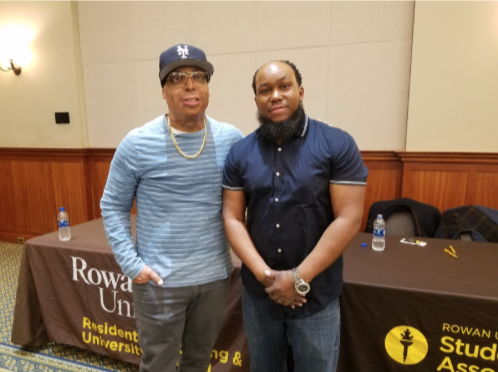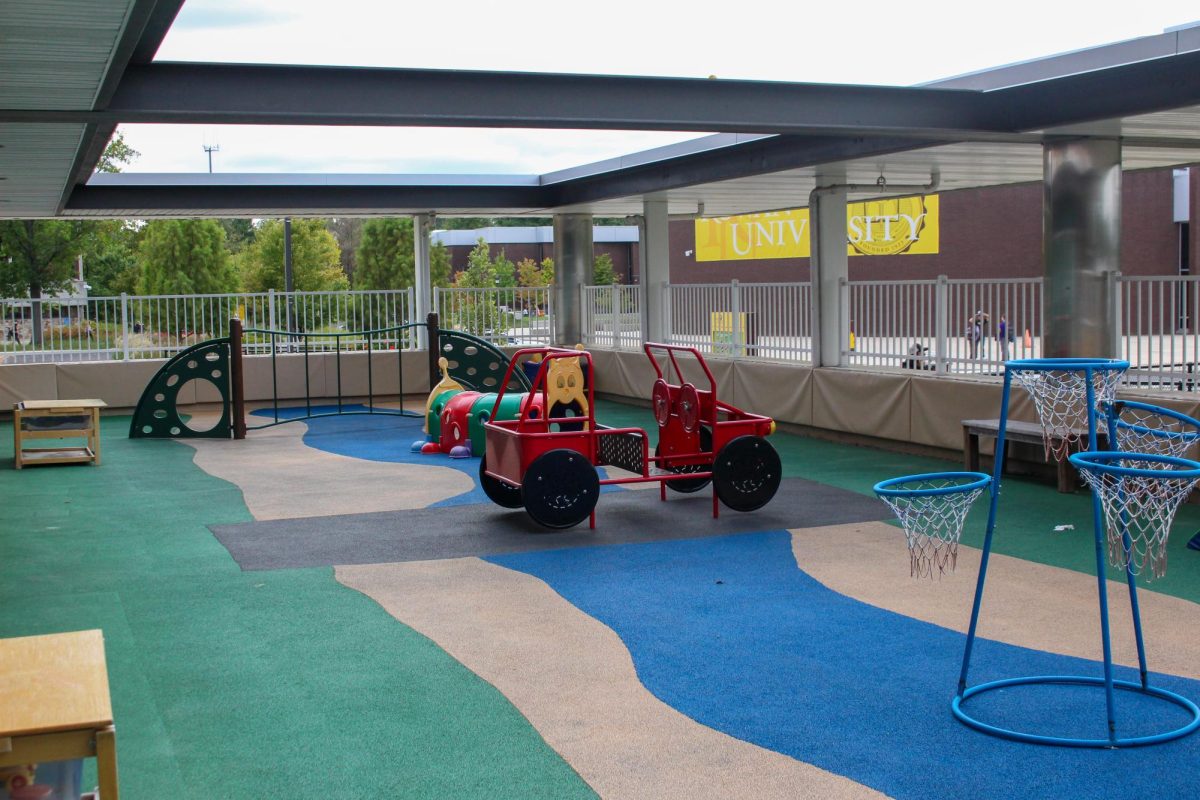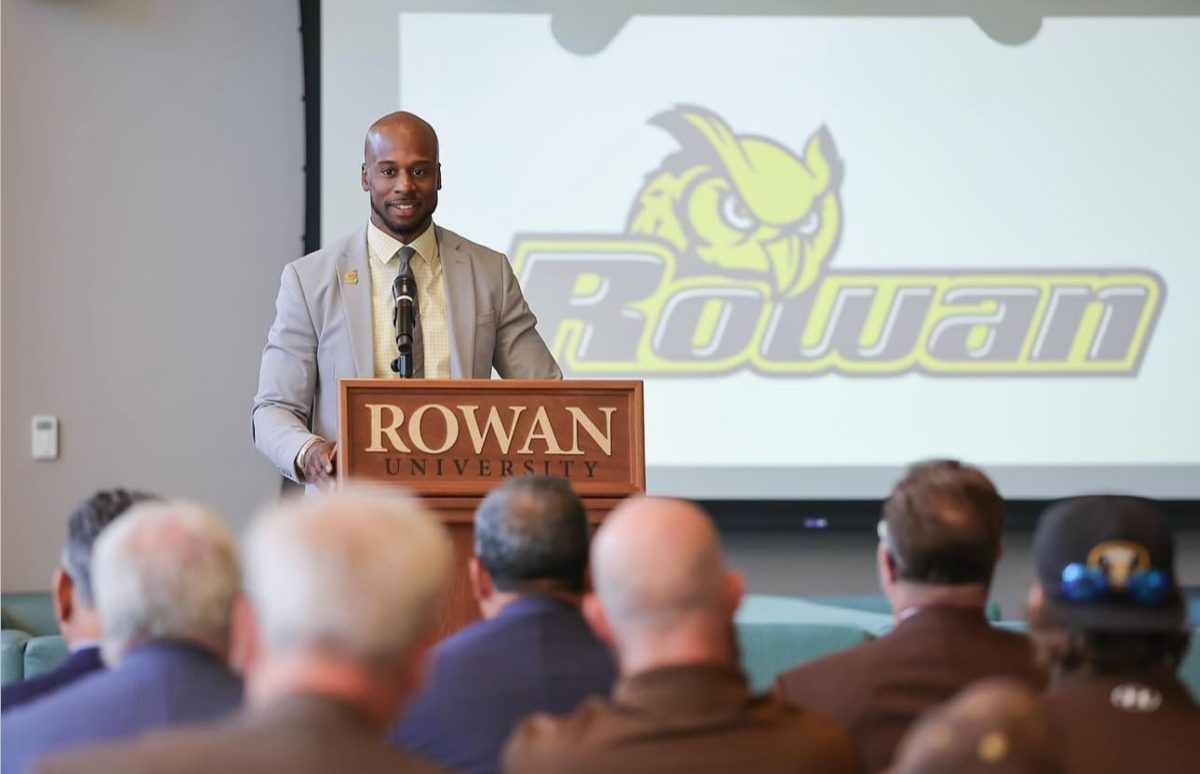Students gathered in the Chamberlain Ballroom on Thursday to watch a short documentary based on the true events of the Jan. 19, 2000 Seton Hall fire, a fire that killed three students and injured 58 more. The event was hosted by the Student Government Association and the Residence Hall Association.
In the documentary, students saw the horrific results of the fire from the first-hand accounts of two burn victims. The documentary showed their recovery process along with the investigation and arrest of the arsonists that brought this tragedy upon Seton Hall’s students.
Following the film, the two featured survivors and former roommates, Alvaro Llanos and Shawn Simons, presented their experiences in person to Rowan students. The presentation included fire safety tips and statistics of fires on college campuses yearly.
On Jan. 19, 2000, at around 4:30 a.m., freshmen Sean Ryan and Joseph LePore set fire to a banner on the third floor of the lounge area in Boland Hall. Due to many false fire alarms over the semester, many students within Boland decided to neglect the alarms and stay in their dorms.
This included Simons and Llanos, who were roommates within the hall. As they took their time getting dressed to exit the building, the blaze on the other side of their door began to grow. When they finally attempted to exit their dorm, they were met with black smoke and an inferno reaching 1500 degrees Fahrenheit. The two decided to fight through the blaze, leaving the room together, but would soon lose each other in the blinding smoke.
Simons crawled through the burning residence hall on his hands and knees, suffering third-degree burns to his hands due to his palms sticking to the burning floor. During his escape, he also endured first and second degree burns to his face and head along with smoke inhalation. He ended up burning 16 percent of his body.
Llanos suffered a much worse fate than Simons. In his attempt to escape through a staircase, he was struck by a fireball which set his coat ablaze. He was found by two resident assistants who were able to put the fire out. Llanos suffered from third-degree burns to his head and torso, resulting in 56 percent of his body burned.
The men, along with 56 other students and firefighters, were injured and three students, Aaron Karol, John Giunta and Frank Caltabilota, died from the inferno.
Montclair University was one of the first schools to reach out to Simons and Llanos, about two or three years after the fire, asking the pair to talk to their students about fire safety and the importance of leaving the building when the alarm goes off.
When the documentary came out in 2010, Simons and Llanos were able to begin visually showing people what they endured and then talk to people about their experience. Due to the documentary, the two evolved into the pair who now present to colleges and universities around the world.
This presentation resonated with Mariolim Orantes-Azcona, a sophomore public relations major, who has seen the “After The Fire” presentation in the past.
“Every time I hear their story, I get emotional and I feel inspired. One takeaway I got from their presentation is that, despite adversities you may face, if you have faith no one can take anything away from you,” Orantes-Azcona said.
The overall goal for Llanos and Simons is to spread awareness.
“It definitely is fulfilling being able to share our story and try to inspire and share everything that we overcame, and to show how strong the human will is, that you can overcome everything,” Llanos said.
Both men agree that students should be aware of the importance of fire safety, and that not being in compliance with fire drill policy can result in a devastating end.
“There are so many different things that attribute to this one story,” Simons said. “You have the aspect of what our parents went through, the point of view from the nurses and everything that was going on with the trial. We wanted everything to be as accurate as possible, so we could tell the full story.”
The survivors commented on living life to its fullest and not taking it for granted.
“To keep fighting for and knowing that everything was going to get better, even if we don’t see the full world in front of us, we just knew things were going to get better and we just kept on fighting to get back to living a normal life,” Llanos said.
Students were able to hug and take pictures with Simons and Llanos before they left, as well as buy the book, “After the Fire: A True Story of Friendship and Survival,” written by Robin Gary Fisher. The book details a first-hand account of the horrors they went through the night of Jan. 19, and the struggle to survive after the flames were extinguished.
“We hope that students will gain the sense that nobody is invincible. Though most of the times there are incidents on campus that are not life-threatening, there’s always the potential for there to be something and it’s about preparation and education to prevent these things from happening,” Simons said.
Allison Mosley, a sophomore biomedical art and visualization major and president of the Residence Hall Association at Rowan, hosted the event along with her peers.
The Residence Hall Association focuses on two different things: advocating for student needs on campus specifically pertaining to housing, and providing different programs for student housing and education.
“For us in particular, this program really speaks to us. Not only is this program really close to home being something that happened at Seton Hall, but at Rowan our fire alarms are almost like a meme, if you will, particularly in our first-year residence halls,” Mosley said.
Mosley spoke specifically about Holly Pointe and the numerous alarms residents experience. The alarms often go off for different reasons, but Mosley stressed the importance of leaving the building when the alarms go off.
This is the first time that the Residence Hall Association hosted this specific presentation, and they are looking to making it an annual event. They also host a few other events throughout the year, which they are looking forward to expanding.
Starting this fall they are hoping to initiate a program called the Transition Series, which will aim to help first year students transition into college. They will be enlisting the help of RES Life or student volunteers to teach students how to live on their own.
“[Students] love to complain about all the different rules and regulations they’re put under, but it’s really important because it’s a way of physically showing to all of our students that live on campus that there is a really good reason why all of these rules are in place,” Mosley says.
Simons and Llanos can be followed on Instagram: @alvaroandshawn.
The book “After the Fire: A True Story of Friendship and Survival” by Robin Gaby Fisher is also available on DVD, titled “After the Fire: A True Story of Heroes and Cowards.”
For questions or comments about this story email [email protected] or tweet @thewhitonline.
























































































































































!["Working with [Dr. Lynch] is always a learning experience for me. She is a treasure,” said Thomas. - Staff Writer / Kacie Scibilia](https://thewhitonline.com/wp-content/uploads/2025/04/choir-1-1200x694.jpg)










































